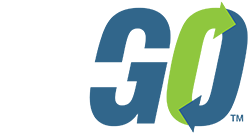Unlocking Payroll Year-End Success

As the year draws to a close, businesses everywhere are gearing up for the much-anticipated year-end payroll processing. This is an exciting opportunity to streamline and simplify the process. Let’s review some steps and processes that should not be overlooked and we’ll share how these processes can be simplified with a payroll software that integrates with your ERP.
1. Check Employee and Employer Data
Before you dive into your year-end payroll tasks, it’s crucial to ensure that your employee and employer data are accurate. Here’s where an integration between payroll systems and leading financial management systems like Sage 300 CRE, Sage Intacct, and Acumatica becomes invaluable. With seamless data synchronization, you can rest easy, knowing that your payroll data is always up to date and accurate. You’ll want to verify:
- Retirement plan indicators, ensuring they align with Form W-2 requirements.
- Employee names and Social Security numbers to prevent IRS penalties.
- Employee status changes, including updates for deceased employees.
2. Review Wage, Tax, and Benefits Data
This step is all about ensuring your payroll data is complete and precise. Here’s what to consider:
- Confirm deferred compensation plans, contributions, and Group-Term Life Insurance adjustments.
- Update and submit special tax items like Other Compensation and Dependent Care Benefits.
- Verify state unemployment insurance tax rates and taxable wage limits for each state.
- Streamline the calculation of Social Security and Medicare taxes for retirees and former employees.
3. Special Procedures and Reporting
Year-end payroll reporting comes with its own set of complexities. Here are some additional aspects to consider:
Third-Party Sick Pay: Federal legislation mandates the reporting of sick pay payments made to employees from a third party, including taxes withheld on those payments. These payments must be included on the employee’s W-2 form or on a separate form provided by the third party. Remember to obtain this information from the third-party provider as soon as possible.
Fringe Benefits/Personal Use of Auto/Group Term Life Insurance Reporting: Certain non-cash fringe benefits must be reported on Form 941 and the employee’s W-2. Taxable Fringe Benefits are included as wages, subject to various taxes.
Box 12W and Box 12DD on the W-2: These boxes include important contributions and should be accurately recorded. Ensure that HSA contributions, medical insurance contributions, and other relevant data are appropriately managed.
Box 13 on the W-2: This includes categories like statutory employee, retirement plan, and third-party sick pay. The Retirement Plan box is automatically checked for plans funded via payroll deduction. It’s essential to keep this information updated.
Box 14: This box may be used for other information, but it’s not mandatory.
Allocated Tips: For restaurants, reporting allocated tips is a crucial part of year-end payroll. If, after completing your restaurant Form 8027, you determine that sufficient tips were not reported, report an adjustment and add allocated tips for the affected employees.
4. Things to Keep in Mind
When gathering data and reporting:
- Schedule special bonus payrolls and request necessary reports for year-end.
- Ensure an adequate supply of payroll forms and blank Forms W-2.
- Stay organized with adjusted payrolls and track manual checks written during the year.
- Prompt employees to update Form W-4 when needed and obtain new Forms W-5 for Advance Earned Income Credit (EIC).
A payroll system that integrates with leading financial management systems helps you streamline your year-end payroll procedures, making the entire process more efficient and less prone to errors. Let’s not forget the peace of mind it provides by ensuring your payroll data is consistently synchronized and accurate.
If you’d like to say goodbye to year-end payroll stress and welcome a new year with confidence, contact us so you can confidently navigate the complexities of year-end payroll while enjoying the benefits of accurate data and streamlined processes.
